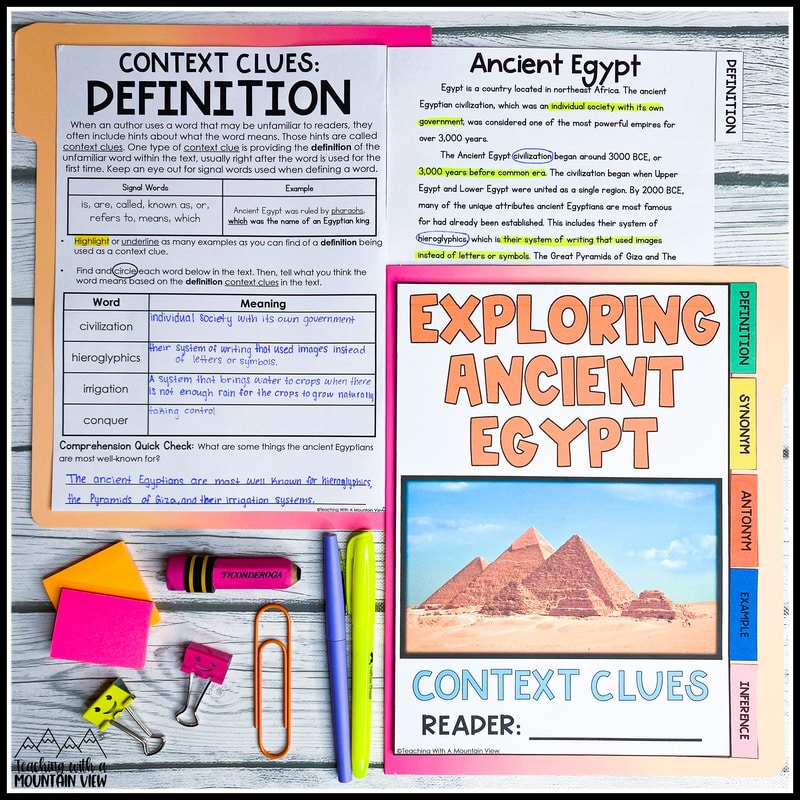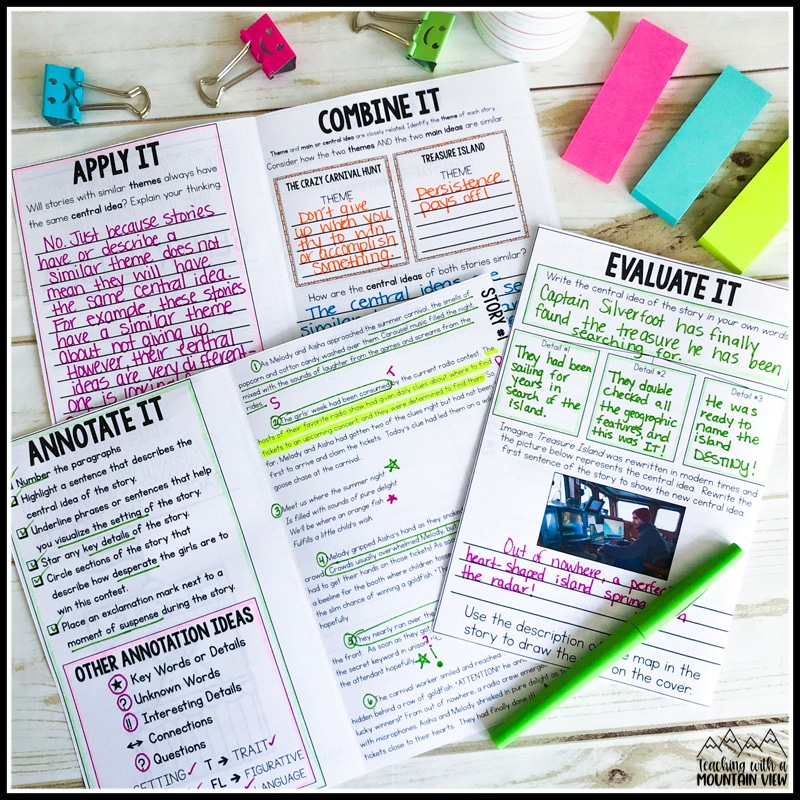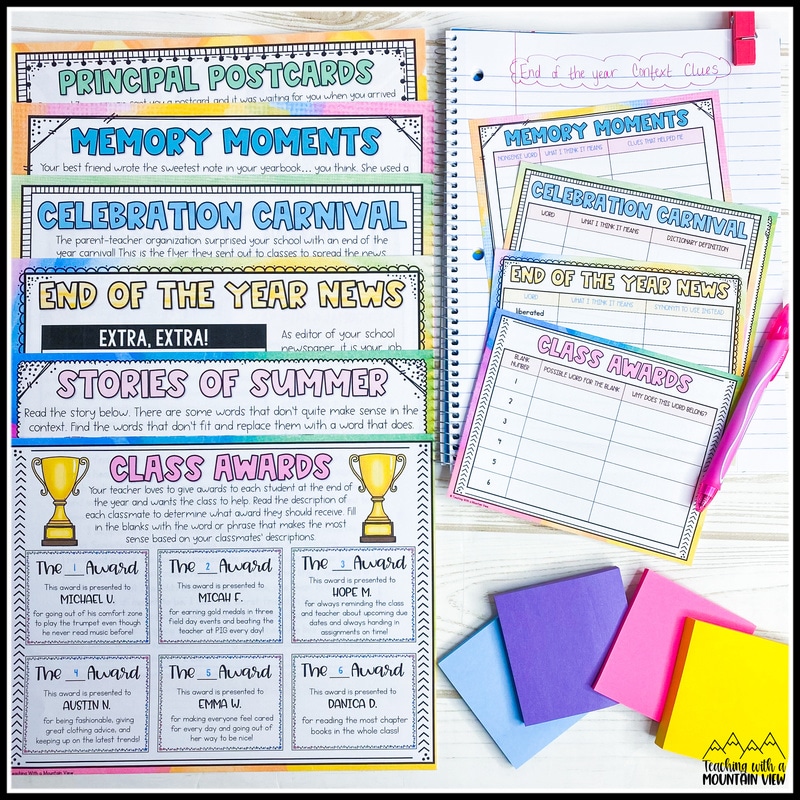The Complete Guide to Context Clues Lessons
By Mary Montero
Share This Post:
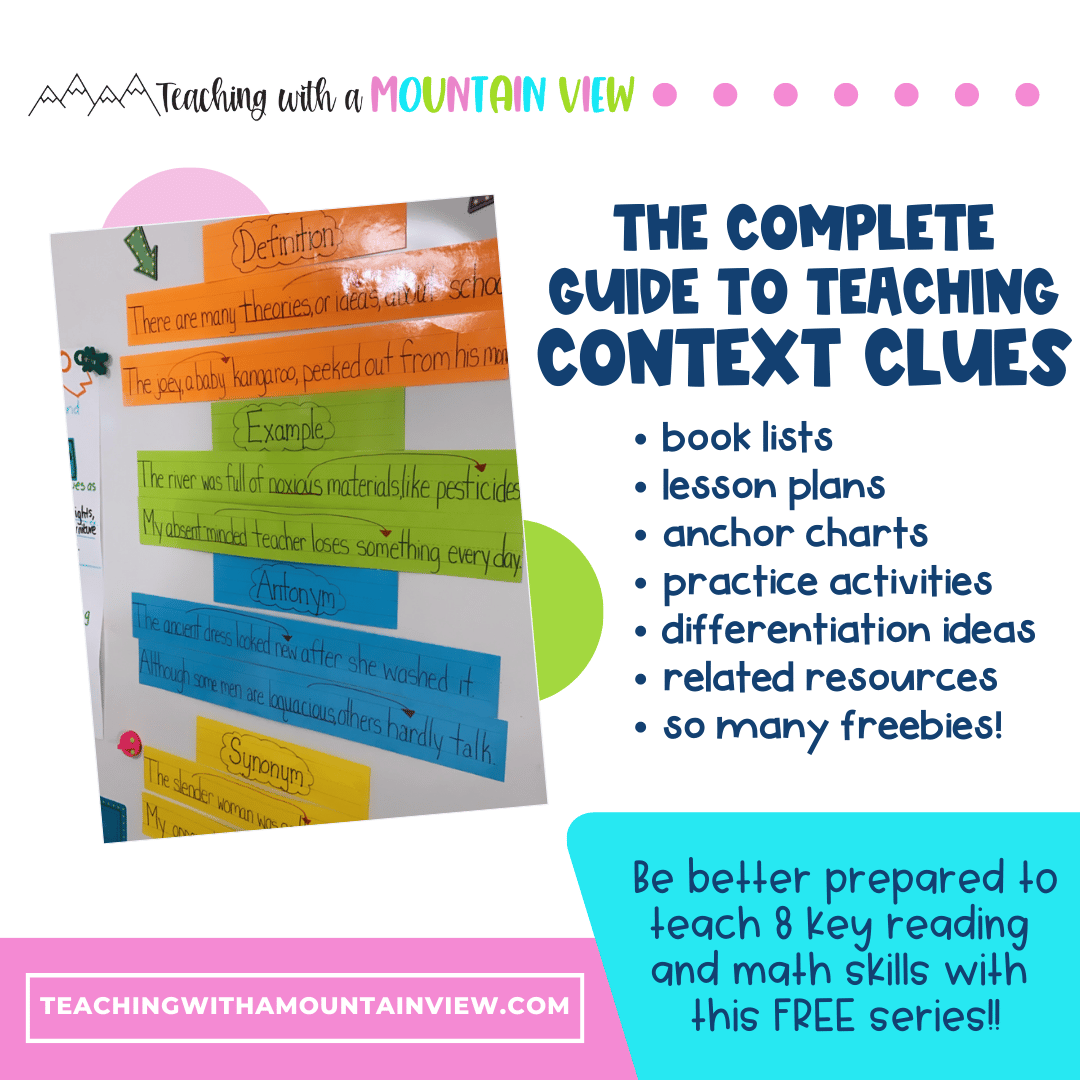
Context clues are so important. Acquiring strong vocabulary skills and utilizing those skills in a way that supports reading is critical for students’ reading success. I compiled a ton of ideas, an introductory lesson, essential skills, book list, freebies and more into one gigantic (and FREE!) PDF Guide to help you plan your context clues lessons. This massive freebie is 13 pages long and includes context clues anchor charts, a context clues choice board, picture activity, reading passage, and more.
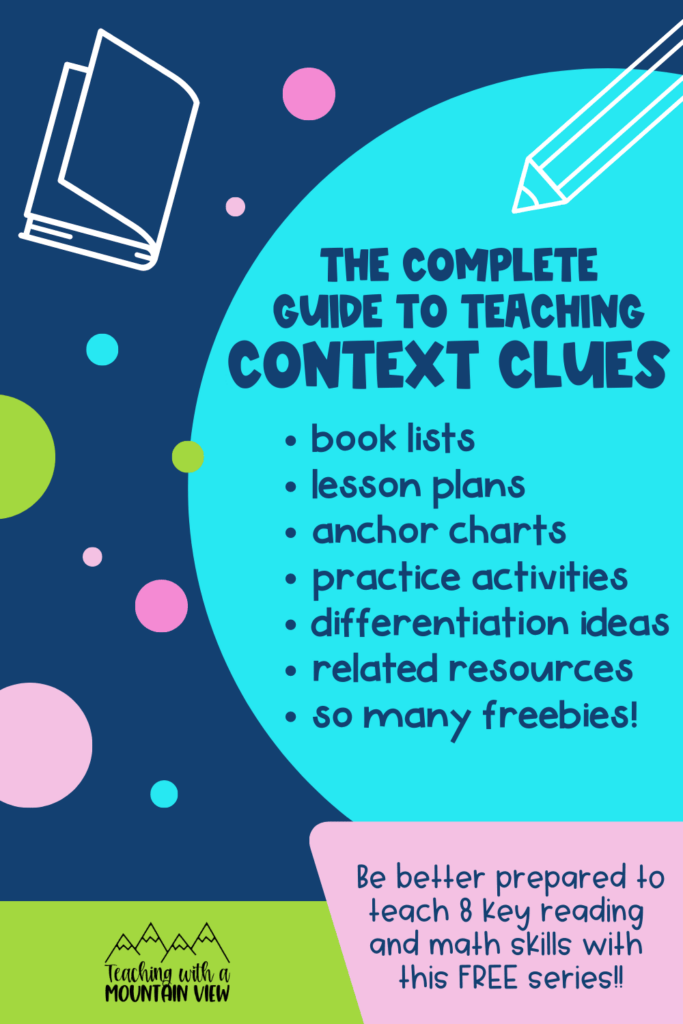
Download Everything You Need– for free!
This free PDF guide will allow you to have all of the context clues resources right at your fingertips.
Context Clues Standards
Although standards differ from state to state and overlap between grade levels, there are several key skills and outcomes that are expected from students. Here they are, broken down by grade level.
Standards and Skills – Vocabulary Acquisition and Use: Determine or clarify the meaning of unknown and multiple-meaning words and phrases, using a variety of strategies.
Teacher Tip: Use these standards for vertical alignment and differentiation. For example, if I’m teaching gifted 3rd graders, not only do I dive more deeply into grade level standards, but I look at the next grade level standard to accelerate their learning as well.
3rd Grade Expectations:
- Use sentence-level context
- Use knowledge of affixes to determine the meaning of words
- Use root words to determine the meaning of words
- Use glossaries or dictionaries to select appropriate meaning of words
4th Grade Expectations:
- Use context as a clue to the meaning of a word or phrase
- Definitions
- Examples
- Restatements
- Use Greek and Latin affixes and roots to determine the meaning of words
- Use glossaries, dictionaries, and thesaurus to determine precise meaning of words
5th Grade Expectations:
- Use context as a clue to the meaning of a word or phrase
- Cause/Effect Relationships
- Comparisons in Text
- Use Greek and Latin affixes and roots to determine the meaning of words
- Use glossaries, dictionaries, and thesaurus to determine precise meaning of words
Lesson Introduction
Context Clues Suggested Introduction Lesson: 3rd-5th Grade
1. Introduction and Hook
Watch this short and sweet video to introduce the concept of context clues. Stop it at the 12 second mark and ask your students what they would do if they were the boy with the soda can. Let them explain their answers, but don’t give any more information. Finish watching the video, which addresses the term “rupture” and context clues.
2. Sentence Strip Intro
Next, I move on to introducing four different types of sentence or paragraph level context clues. I have eight sentences that I write out on sentence strips. (Source Note: These sentences came from various sources years ago!) There are two sentences for each type of context clue I teach (definition, example, antonym, and synonym). I put magnets on the back of them, and we talk about the word and the clue that we are using to understand its meaning. I try to get my students to come to a natural conclusion about the clues rather than just telling them this is an example clue or an antonym clue. I don’t put up the header for each until we have had a chance to discuss.
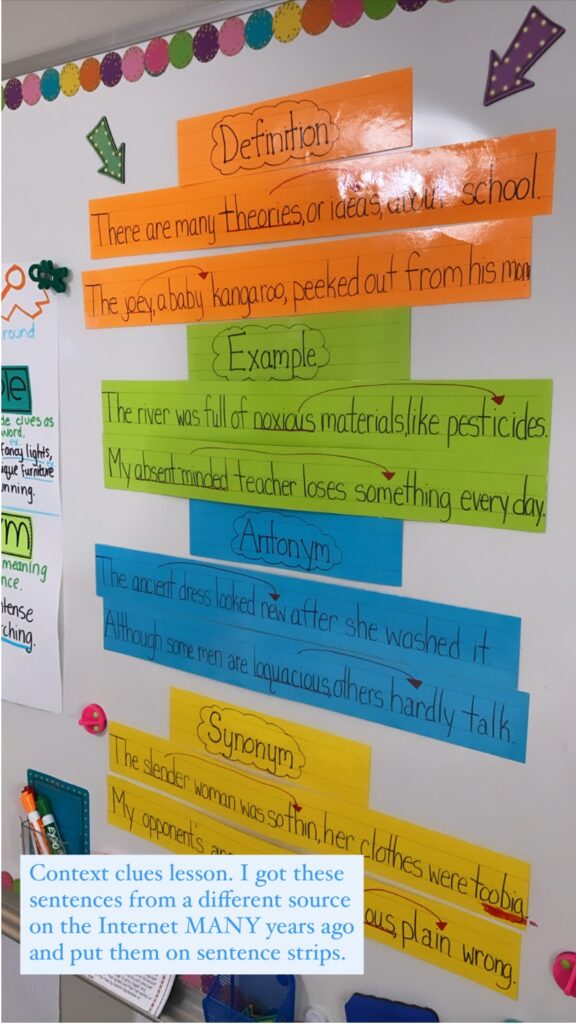
3. Anchor Chart
At this point, we stop and make an anchor chart and/or notebook entry together to use as a reference tool from this point forward.
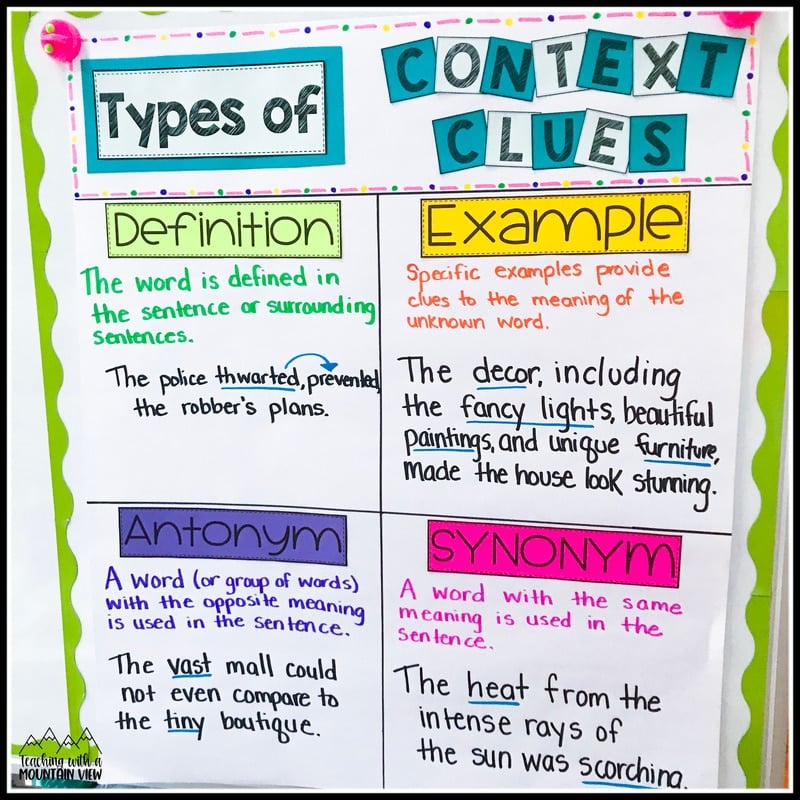
4. Informational Text
Sometimes I have to actively remind myself how important it is for students to work with both informational and fiction texts! This is where my Context Clues Flipbook comes in handy! Now that we have started to practice these skills on a sentence-level, we move on to longer paragraphs. We typically work through one or two pages/skills each day as they become more comfortable with using these different types of clues.
5. Anchor Chart 2
At this point, we start keeping track of all of our skills and strategies on our second context clues anchor chart. We add to it throughout our unit and then keep it up all year as a reminder of different strategies we can use. Other strategies to consider including are: Inference and Restatement.
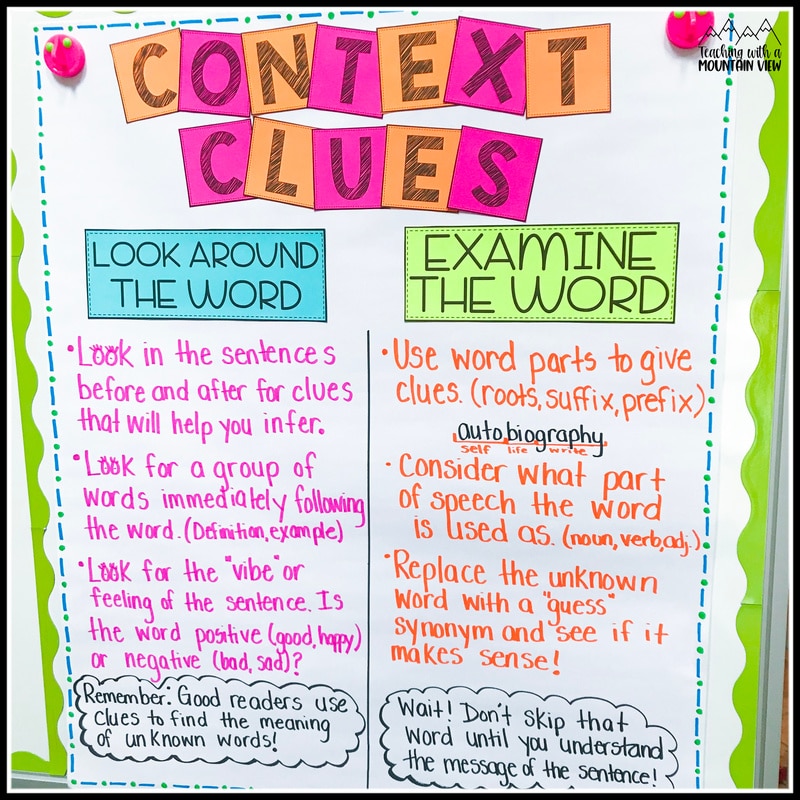
6. Word Study
If you teach grades 4 or 5, this is when I start to incorporate prefixes, suffixes, and roots into my context clues instruction. Of course, we spend a lot of time teaching these skills throughout the year, but I do intentionally teach this as a context clues skill during our unit.
7. Practice, Practice, Practice
I incorporate a ton of different practice into our literacy centers over the next couple of weeks. I also tend to do at least one or two more lessons in small groups to really hone student understanding of skills. During this time, I highly recommend that you complete Using Pictures to Teach Reading Skills and the Rapid Read and Review Context Clues, both of which are included for FREE below.
More Ways to Expose Students to Context Clues Skills
It is vital that students have the opportunity to examine skills in a variety of ways. I have compiled a list of ways to work with context clues vocabulary skills throughout the year. You can find this (and so much more!) as part of the free PDF download.

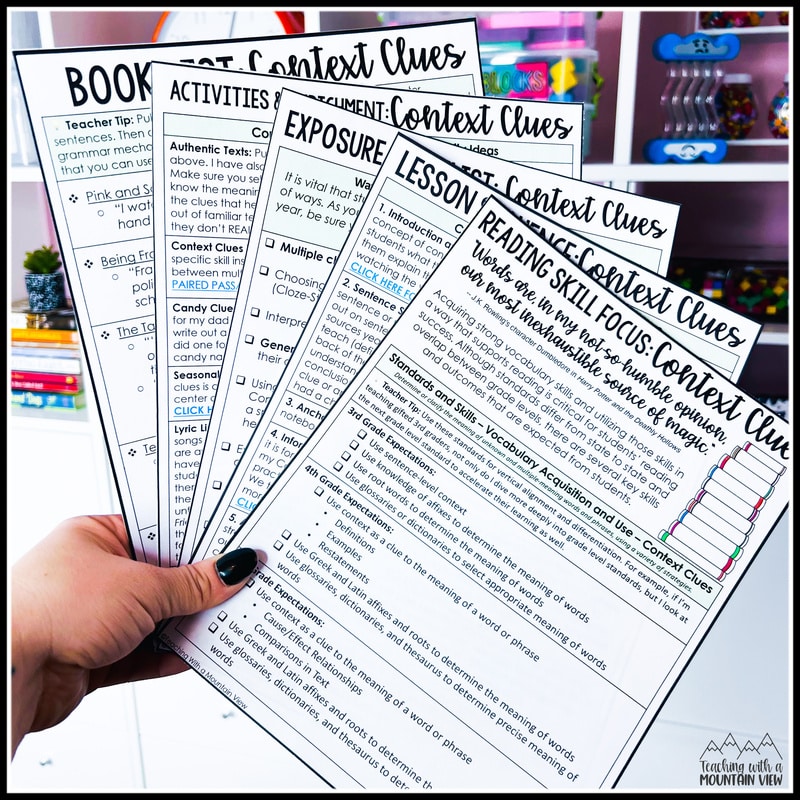
Context Clues Book List
Teacher Tip: Pull specific sentences out of each book to use as mentor sentences. Then dissect them, not only for context clues but for parts of speech and grammar mechanics. I have included a sample sentence or two from each book that you can use to practice different types of context clues.
I also created an Amazon Affiliate List of my favorite context clues books. The free PDF includes activity suggestions to use with each book to make planning your context clues lessons easier!
Context Clues Enrichment and Practice Activities
Authentic Texts: Pull a page from your current read aloud or one of the books above. I have also included one from A Dog’s Life in the blog post linked below. Make sure you select a page that includes several words that most students will not know the meaning of. Then walk through each unknown word and point back to the clues that help them identify the meaning. This seems simple, but pulling words out of familiar texts to demonstrate to students how often they gloss over a word they don’t REALLY know the meaning of is so eye-opening!
Context Clues Paired Passages: I am all about incorporating paired passages into specific skill instruction! These Paired Passages help students draw connections between multiple texts while still practicing important skills.
Candy Clues: Candy Clues is the most engaging activity ever! I I make one of these for my dad each year, and at the end of the year for my students. Basically, you write out a story with blanks. A candy name is used to fill in the blank. For example, I did one for my students at the end of the year this year. Here’s what it said, with the candy names filled in.

Seasonal Brush Ups: I am a huge proponent of spiral review, and of course, context clues is a skill that you have to keep coming back to. I use these fun context clues center activities throughout the year to keep students explicitly practicing their skills.
There are many more ideas in the free PDF!
Related Blog Posts
- Ultimate Word Study Post
- Context Clues Blog Post
- Multiple Meaning Words Blog Post
- Teaching Domain Specific Vocabulary
Related Resources
Mary Montero
I’m so glad you are here. I’m a current gifted and talented teacher in a small town in Colorado, and I’ve been in education since 2009. My passion (other than my family and cookies) is for making teachers’ lives easier and classrooms more engaging.







